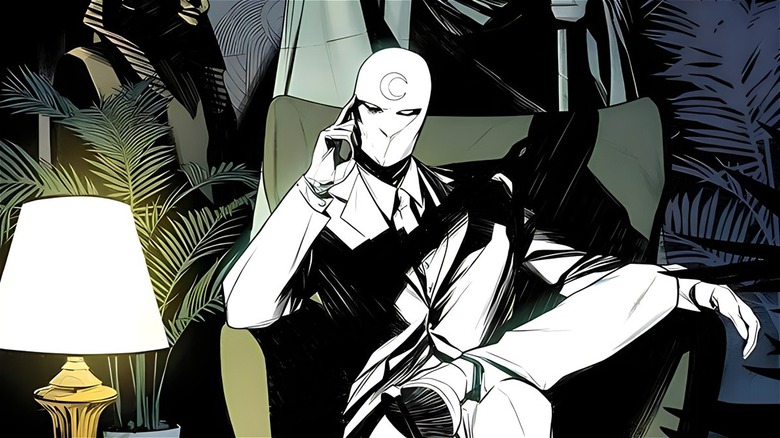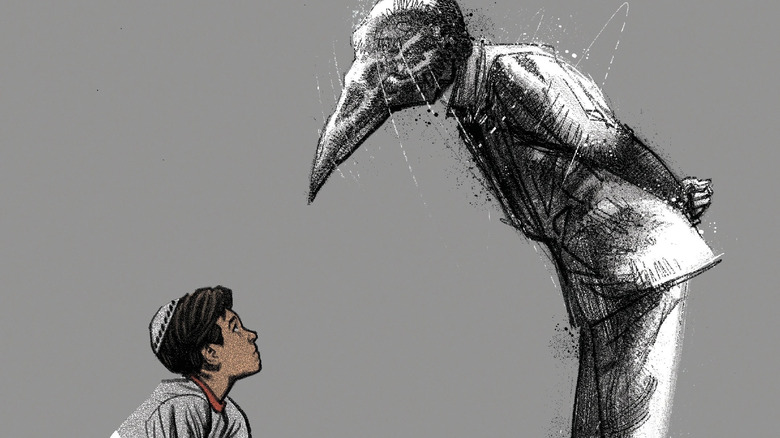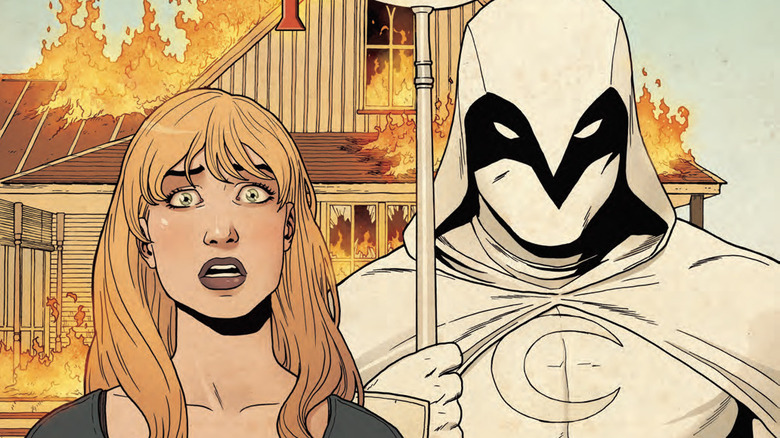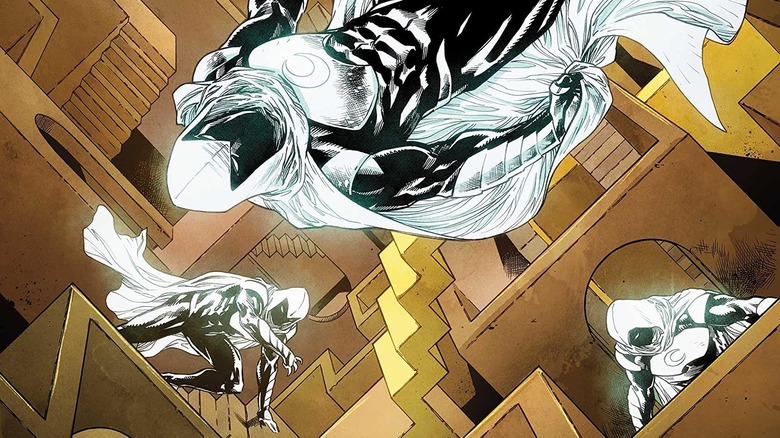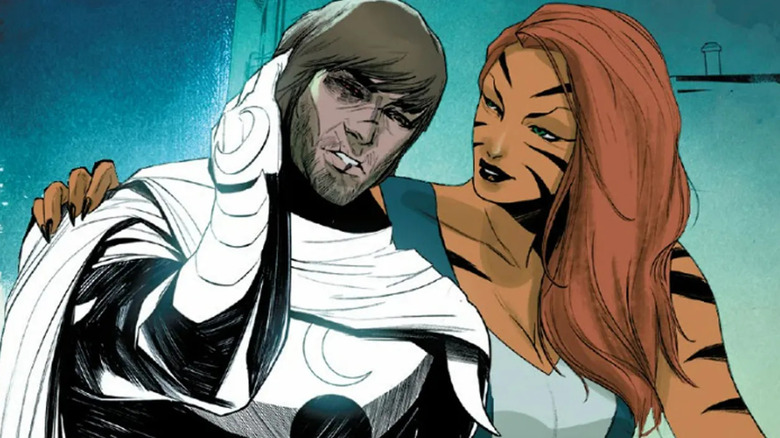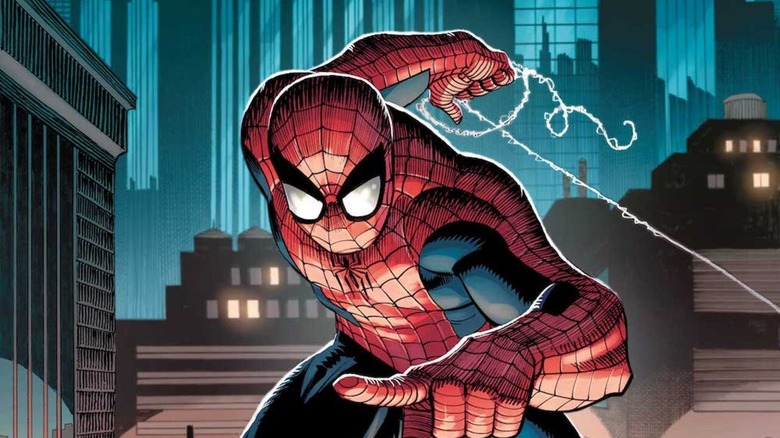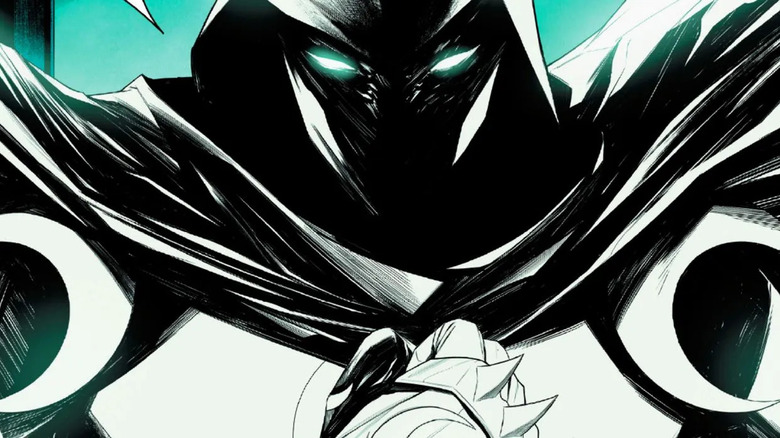Jed MacKay's Moon Knight Comics Masterfully Fix The Character's Most Problematic Arcs
Spoilers for Moon Knight's current ongoing series at Marvel Comics.
"Moon Knight" #25 by Jed MacKay, Alessandro Cappuccio, Rachelle Rosenberg, and VC's Cory Petit, is in comic book stores now, with the landmark issue continuing to showcase how remarkable the current run is.
In this newest series, Moon Knight has turned a new leaf, as he dedicates his time to protecting night travelers as the head of the Midnight Mission — which, of course, leads to him to taking on his usual weird array of supernatural entities, ranging from vampires to masked serial killers. Part of what makes the ongoing series so good, though, isn't just that it's carved a new path for Marvel's mysterious hero, but how it's salvaged the worst arcs of his past.
MacKay and Cappuccio's handling of Moon Knight's decades of inconsistent lore has been genuinely masterful, weaving through a complicated past to forge one of Marc Spector's best stories ever. While it would've been easier to ignore Moon Knight's worst comic book stories, this creative team has instead found a way to embrace and reframe them as key elements in a fantastic new tale. And now, as MacKay continues applying this multifaceted approach to MCU synergy — including his seamless integration of new MCU star Layla el Faouly in "Moon Knight" #25, without any cost to the stories at hand — it has become clear that not only is "Moon Knight" a can't-miss series, but also a perfect blueprint for how future comic book creators can fix the mistakes of the past.
Jeff Lemire and Greg Smallwood set the standard for Moon Knight
Moon Knight debuted in 1975's "Werewolf by Knight" #32 by Doug Moench and Don Perlin, and he's had many creators — including Bill Sienkiewicz, Charlie Huston, and Alex Maleev — work on different versions of the character. Truth be told, though, the superhero that fans love today truly blossomed in Jeff Lemire and Greg Smallwood's iconic 2016 run.
Lemire's story, set in a mental institution, examined Marc Spector's psyche with a human depth the character had never received before, propelled to even greater heights by Smallwood's trippy and multifaceted art. While previous writers had grappled to find a consistent explanation for Moon Knight's various alters, it was Lemire who boldly rewrote Marc as a man who had suffered from Dissociative Identity Disorder since childhood, cleverly explaining prior inconsistencies from other comics as him being an unreliable narrator. Furthermore, Lemire established that it wasn't Khonshu's manipulatons that created Marc's condition — in fact, the Moon God chose Marc as a young boy because of Marc's mental health struggles.
While past runs on "Moon Knight" either tiptoed around Spector's mental health or blasted it with negative stereotypes, Lemire and Smallwood's run went deep. Marc's mental health is consistently handled with care and grace. His battle with Khonshu — and his struggle to figure out what's real or not — is poignant, with the deity entity feeding him an illusion about who is in control. The series ends in a powerful moment of self-acceptance, where Marc's entire system — Marc, Steven, Jake, and Moon Knight — all come together to break Khonshu's skull, effectively ending his hold on him.
Sadly, while Lemire and Smallwood's run established a victorious new status quo for Spector, later comic book portrayals undid his victories.
Moon Knight comics suffered from two hugely negative portrayals
Following Lemire and Smallwood's run, two particular storylines caused more harm than good.
Max Bemis and Jacen Burrows's run on "Moon Knight" took the harrowing version of the character seen in Lemire and Smallwood's run, and ... well, essentially, turned his adventures into a comedy series. Bemis, who has admitted his own mental health struggles inspired his run on "Moon Knight," opted for a more outward approach to Marc Spector's struggles. Moon Knight's rejection of Khonshu was somewhat undone, and he constantly referred to himself as "crazy," moments that were (bizarrely) played comedically. Marc's personal struggles were milked (intentionally and unintentionally) for laughs. Despite Bemis' largely good intentions in portraying the "crazy" side of Spector, it led to one of the more perplexing portrayals of mental health in comics history, particularly in regard to his take on Jake Lockley.
Even worse was Jason Aaron's "Age of Khonshu" arc in "Avengers," which reverted Moon Knight back to being a follower of Khonshu — undoing his self-empowerment — and reverted to problematic mental health stereotypes, with Spector framed as the arc's big villain. While the story's fights between Moon Knight and Earth's Mightiest Heroes were exciting, making Spector an antagonist felt reductive, complete with lots of stereotypical mentions of Marc being "crazy," or "off his meds," or "super schizophrenic."
"Age of Khonshu" was a big step backwards for mental health representation in comics. Amazingly enough, though, it has been the events of this awful story that directly led to one of the greatest runs in "Moon Knight" history, as MacKay and Cappuccio's ongoing book have used Marc's redemption as a launching pad.
How MacKay's Moon Knight builds greatness on the terrible works of the past
Moon Knight's status in the Marvel Universe hit a low point after "Age of Khonshu." Following runs would've been forgiven for retconning that story, particularly given its contradictions to Lemire and Smallwood's magnum opus.
Instead, Jed MacKay and Alessandro Cappuccio used Moon Knight's worst story as a jumping-off point to build what is — 25 issues in — one of the best comics of the 2020s. Looking back, it's hard to deny the incredible work the pair of creators have done on the series thus far.
From issue one onward, Moon Knight — now in therapy — explains his complicated position: he knows Khonshu is a sinister figure unworthy of his worship, but the complex nature of their past means that he will continue serving his mission to protect travelers of the night (albeit, in a new way). MacKay's strong writing choice is to lean hard on Marc's guilt over the Avengers incident, adding considerable depth to these past events, while simultaneously crafting a new, better status quo for the vigilante protagonist. Marc doesn't forget about Khonshu, but isn't subservient to him, as he once was. Marc's past actions constantly hang heavily over him, to the point where he won't even take his mask off.
The current "Moon Knight" run doesn't retcon his most confusing stories and interpretations, but makes them more sensitive and realistic. For example, his daughter Diatrice, appears alongside his longtime flame, Marlene: this plot element is a direct continuation from the Bemis run, where it was introduced in a terrible manner. However, MacKay approaches Marc's relationship with his daughter in a realistic, tragic way, and again focuses on Marc's guilt regarding his genuine belief that she's safer being far away from him.
MacKay's Moon Knight run also shows the beauty of a straightforward story
Another big reason why the current "Moon Knight" ongoing series has been so well-received is its relatively simple storytelling.
Each issue of Moon Knight feels like a case-of-the-week TV show, but with overarching storylines involving bigger villains. One week he's trying to bust a group of vampires, the next greeting a mysterious new arrival to the Midnight Mission, and then another issue features him taking on a group of obscure villains, like the bank robbers The Fast Five. The unpredictable nature of the challenges Moon Knight faces keeps readers on their toes, while also allowing Jed MacKay and Alessandro Cappuccio to plant seeds that continually appear in future issues, such as the arrivals of Hunter's Moon, the returning Zodiac, and the return of Black Spectre in "Moon Knight" #25. The establishment of the Midnight Mission is a unique way to ground Moon Knight's often bizarre stories, while making a natural launching pad for both new characters like Reece and Soldier, as well as the return of his ex-girlfriend, Tigra, as the two embark on a touching new romance.
"Moon Knight" has also brought back plenty of old Moon Knight characters (including a spectacular issue featuring Stained Glass Scarlet) but never gets bogged down by his complicated history with Khonshu, meaning he can act untethered from the baggage connected to his origin. In stories both big and small, "Moon Knight" has kept things straightforward, been largely reader-friendly, and maintained that classic Marvel feeling of a damaged hero doing the best he can to make the world a better place.
How MacKay's Moon Knight run should inspire other comics in crisis
"Moon Knight" ultimately sets the standard for how other Marvel Comics series stuck in the mud could find their footing once again.
For example, any comic reader will tell you that the current "Amazing Spider-Man" ongoing series is trapped in an awful place, where editorial won't let Peter Parker grow up in the way fans want him to. These days, Spidey's life has become a miserable mess. Peter isn't allowed to do normal things like get married or have kids: instead, he's embroiled in a bizarre supernatural Mayan god storyline that has absolutely nil to do with why people like Spider-Man in the first place. Instead of continuing down this disappointing path, "Amazing Spider-Man" should borrow inspiration from "Moon Knight" by no longer avoiding the awful storylines of the past — face it, Marvel editorial, we'll never move past "One More Day" until we actually reckon with it, ala Moon Knight and "Age of Khonshu" — and take Peter Parker back to basics. How fun would it be to go back to the days where he's a regular guy taking on villains of the week, with small build-ups eventually leading to a long-term payoff? Right now, the comic is a slog to read.
MacKay has actually already taken a similar approach with his "Avengers" run alongside C.F. Villa. Jason Aaron's previous run was a crowded, multiversal affair that lost a lot of its stakes by featuring so many variants of characters that the stakes never really felt real, but MacKay has scaled all that back to make it a simple team book again. Yes, the events featuring Kang are large in scale, but it doesn't come at the cost of key character moments or a logical story.
The new Moon Knight is a near-perfect series
Thanks to Jed MacKay and Alessandro Cappuccio's incredible work on "Moon Knight," the lunar hero is in the best shape he's been in a long, long time.
"Moon Knight" has been great from the start, and hasn't had a single bad issue or arc, which is incredibly rare for any book that's gone as long as their run has. And that's due to MacKay and Cappuccio's deliberate storytelling. The book knows exactly what it wants to be, and it doesn't stray away from its successful formula. It masterfully explores Marc's trauma, mental health, and D.I.D., without poking fun at it, allows room for new friends and foes, and honors his history in the pages of Marvel Comics. "Moon Knight" doesn't retcon its immediate past but instead finds ways to make maligned and forgotten storylines matter. MacKay and Cappuccio are consistently delivering great comics.
Frankly, considering how "Moon Knight" has had some fantastic runs over the years, the fact his book remains as fresh as it is in 2023 is a serious achievement. Marvel Comics has teased the potential end of MacKay and Cappuccio's run, recently releasing promo art hinting at the "Knight's End" — but hopefully, the book runs as long as the two talented creators want it to. Whenever they call it quits, this will be remembered not just as one of the single-best runs on Moon Knight ever, but also one that stands tall alongside "Immortal Hulk" and "House of X" as one the landmark comics of its era.
Readers can see MacKay and Cappuccio's run continue (and Scarlet Scarab's debut) in "Moon Knight" #25 by Marvel Comics, which is in comic book stores and available at online retailers now.
